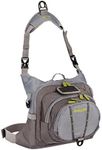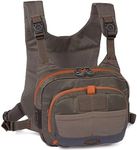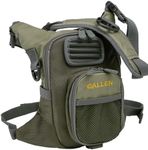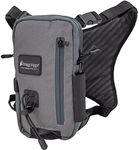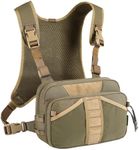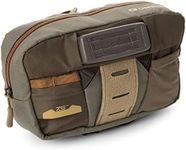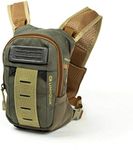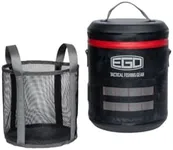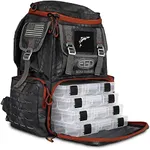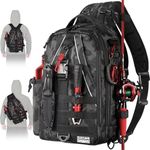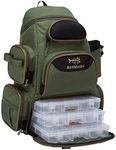Buying Guide for the Best Fly Fishing Chest Pack
Choosing the right fly-fishing chest pack can significantly enhance your fishing experience by keeping your gear organized and easily accessible. When selecting a chest pack, consider your specific needs and preferences, such as the type of fishing you do, the amount of gear you carry, and your comfort. Here are some key specifications to consider when picking the best chest pack for you.CapacityCapacity refers to the amount of gear the chest pack can hold. This is important because it determines how much equipment you can carry with you. Smaller packs (5-10 liters) are suitable for short trips or minimal gear, medium packs (10-20 liters) are good for a moderate amount of gear and longer trips, while larger packs (20+ liters) are ideal for those who carry a lot of equipment or plan to be out for extended periods. Choose a capacity based on the duration of your fishing trips and the amount of gear you typically need.
Comfort and FitComfort and fit are crucial for ensuring that you can wear the chest pack for long periods without discomfort. Look for adjustable straps and padded back panels that can be customized to fit your body shape and size. A well-fitted pack will distribute weight evenly and reduce strain on your shoulders and back. Try on different packs to see which one feels the most comfortable and allows for a full range of motion.
Accessibility and OrganizationAccessibility and organization refer to how easily you can access your gear and how well the pack helps you keep everything organized. Packs with multiple compartments, pockets, and attachment points can help you keep your gear sorted and within easy reach. Consider how the pack opens and whether you can access your most-used items quickly. Think about your fishing style and what gear you need to access frequently to determine the best organizational features for you.
DurabilityDurability is about how well the chest pack can withstand the elements and regular use. Look for packs made from high-quality, water-resistant materials that can handle exposure to water, sun, and rough terrain. Reinforced stitching and heavy-duty zippers are also indicators of a durable pack. If you fish in harsh conditions or plan to use the pack frequently, prioritize durability to ensure your pack lasts longer.
WeightWeight is the overall heaviness of the chest pack when empty. A lighter pack can reduce fatigue, especially during long fishing trips. However, lighter packs may sometimes compromise on durability or capacity. Packs typically range from very lightweight (under 1 pound) to heavier options (over 2 pounds). Consider how much weight you are comfortable carrying and balance it with the need for durability and capacity.
Additional FeaturesAdditional features can enhance the functionality of your chest pack. These might include hydration bladder compatibility, rod holders, fly patches, or built-in workstations. Think about what extra features would be beneficial for your fishing style. For example, if you often fish in hot weather, a hydration bladder might be essential. If you need to change flies frequently, a built-in workstation could be very useful. Choose features that will make your fishing experience more convenient and enjoyable.
